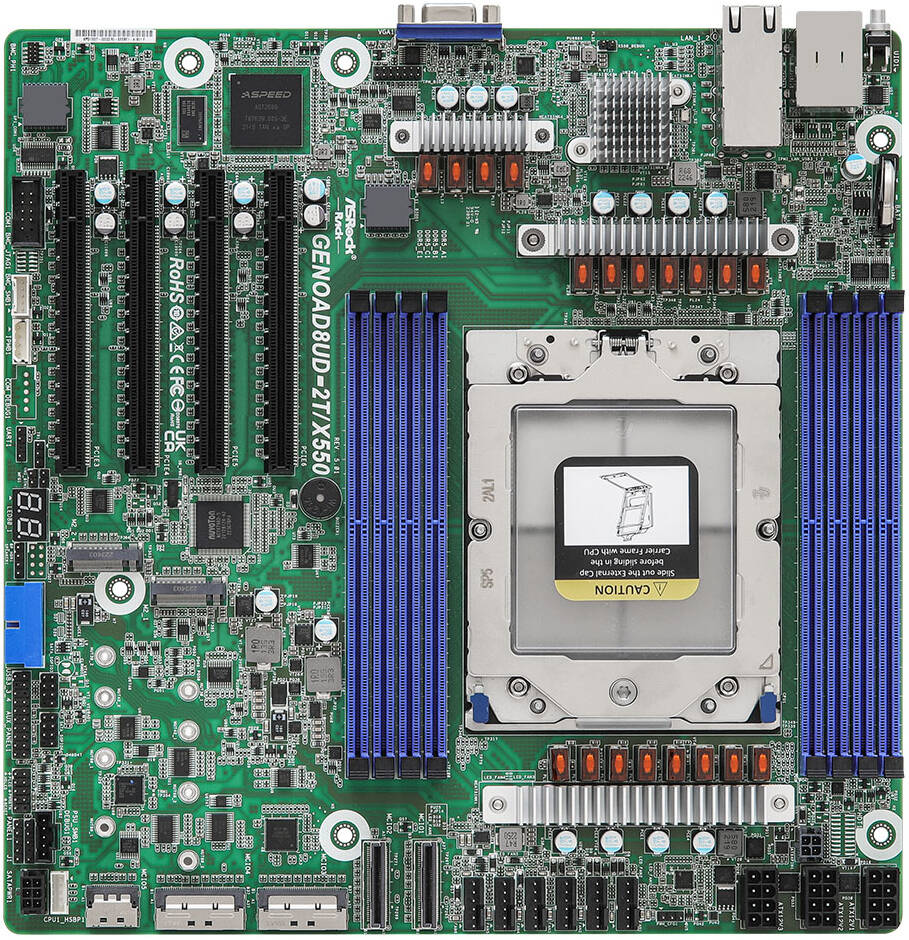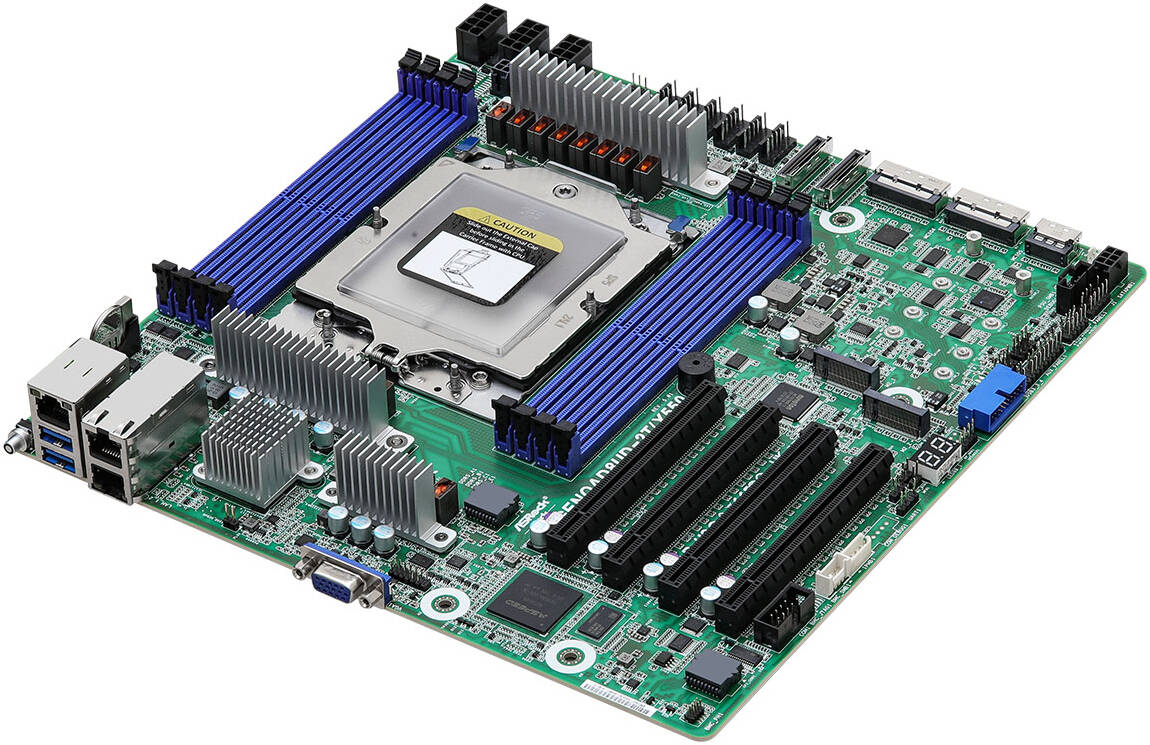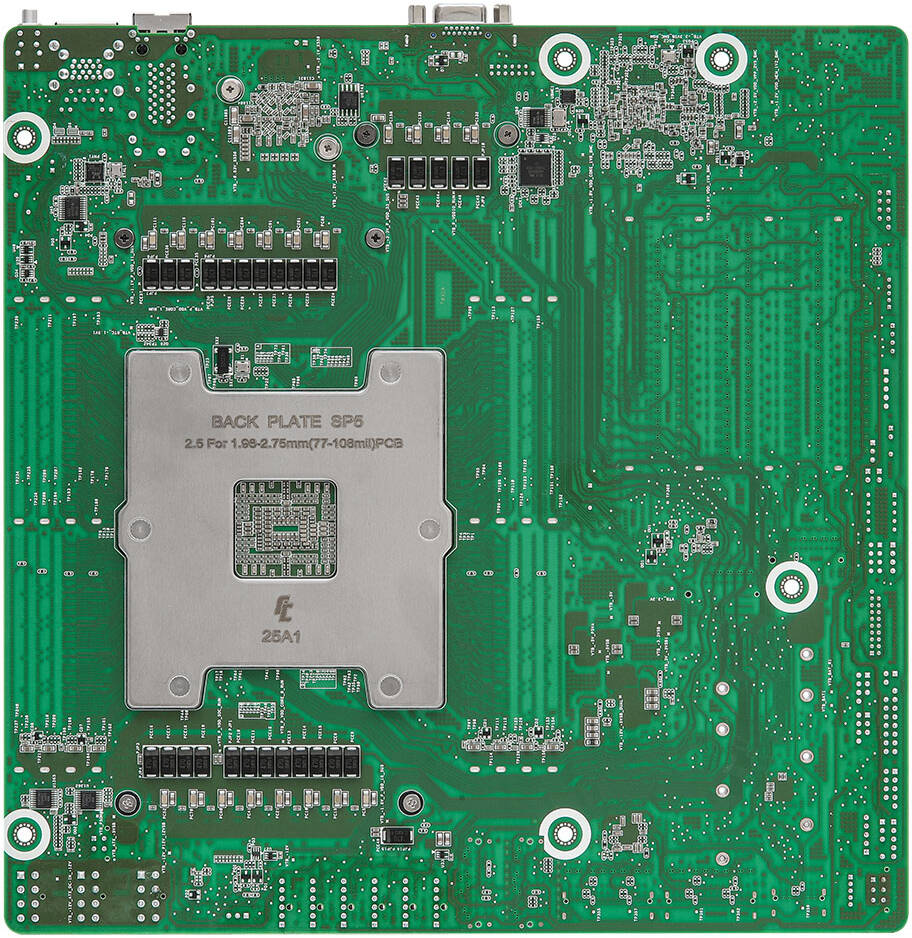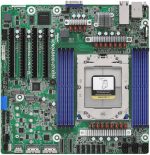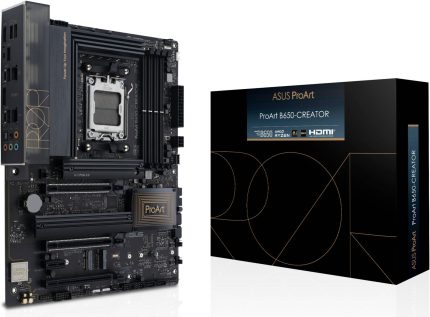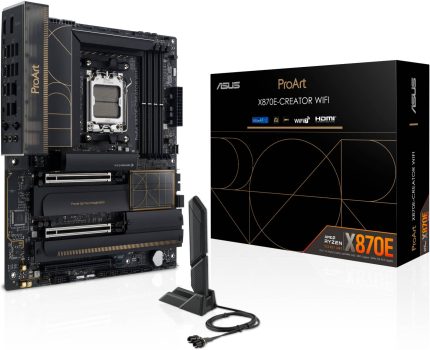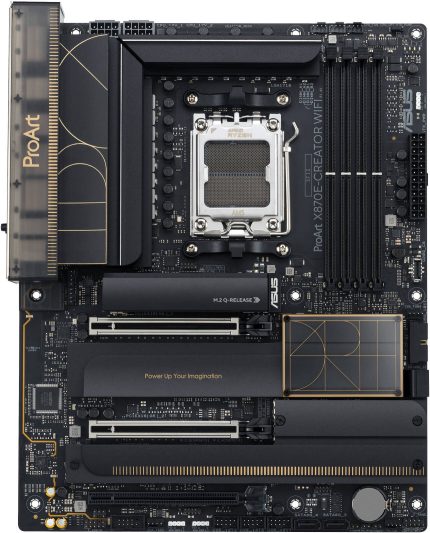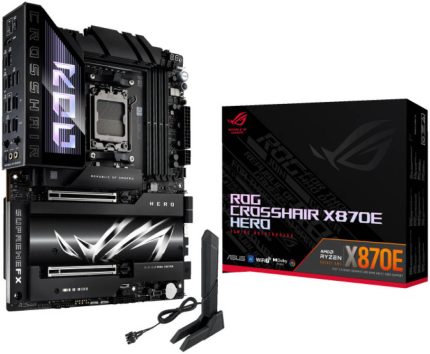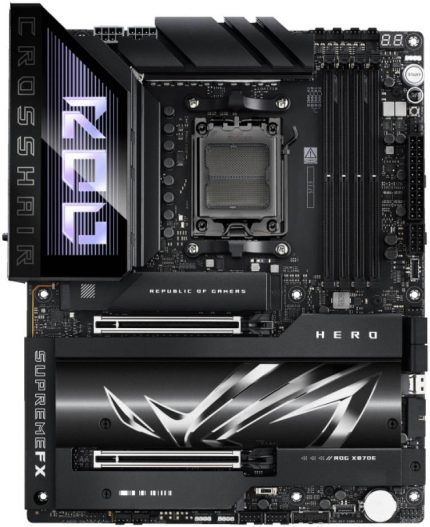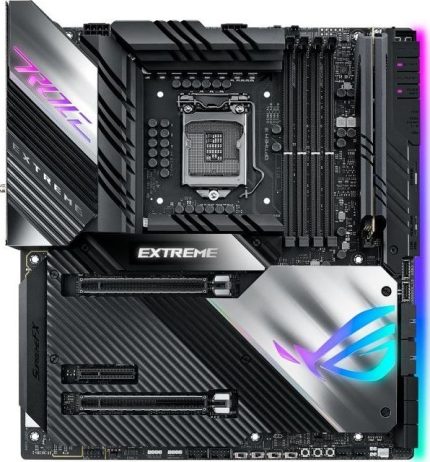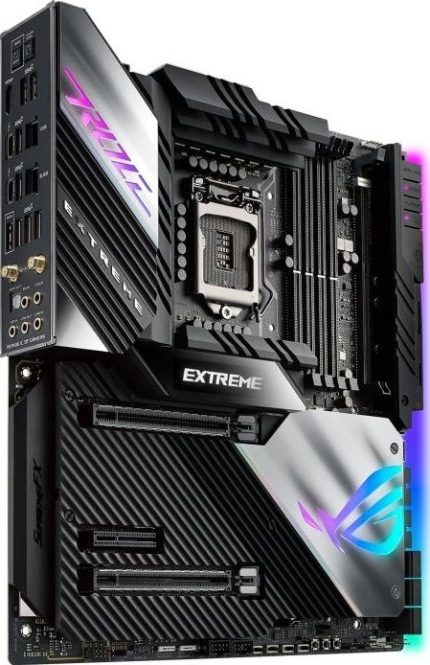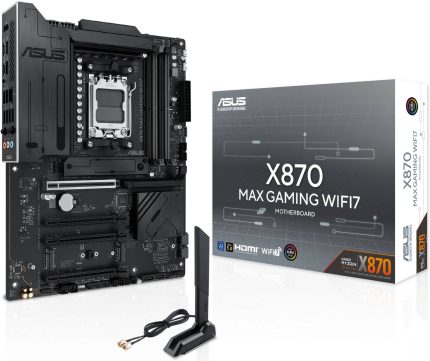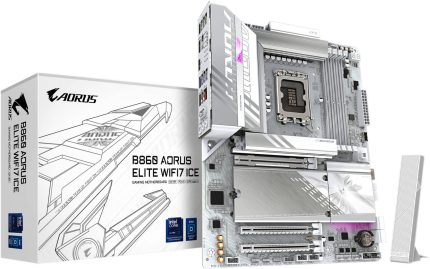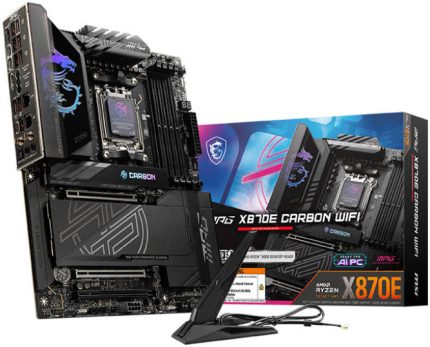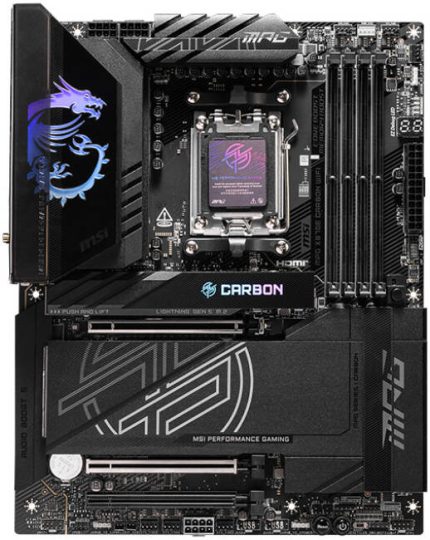Rack GENOAD8UD-2T/X550 Genoa Motherboard
The form factor. This is not a 9.6″ x 9.6″ mATX form factor or a 12″ x 9″ ATX form factor. Instead, it is 10.4″ x 10.5″. Even with a non-standard size, even finding room for the motherboard standoff mounting points appears as though it was more challenging for ASRock Rack. That non-standard chassis also meant that the first chassis we tried to build this motherboard into did not fit.
ASRock Rack GENOAD8UD 2T X550 CPU Sockets And Memory
On the right edge of the motherboard, we can see six five-pin fan headers. That is a fairly good set since we expect this platform to need cooling. A third trade-off with the platform is the power situation. Given physical size constraints, the motherboard does not have a standard 24-pin power connector. Instead, it has three 12V CPU power inputs. That does mean it also supports DC input if one has a large 12V DC power source. Many power supplies do not have three 12V inputs, and one needs to use an adapter to perform normal power functions from a standard power supply’s 24-pin ATX connector.
While that may sound like a lot of trade-offs, there are some areas where this blows away a standard mATX motherboard beyond just the core counts. For example, there are four PCIe expansion slots. These are not just for show, each is a PCIe Gen5 x16 slot. That is only half of the EPYC Genoa’s PCIe Gen5 slot capacity. The Gen5 x16 slots are also the lanes from the EPYC CPU that support CXL 1.1 Type-3 devices. See Compute Express Link CXL 3.0 as our latest guide in that area. We did not get to test these slots with the CXL devices, however, we are still in the early days of devices and support so our readers should view CXL support as a bit of a forward-looking feature.
ASRock Rack GENOAD8UD 2T X550 PCIe Slots 1
Having 64x PCIe Gen5/ CXL lanes is great, but there is a lot more. Next to these slots are two PCIe Gen4 x4 M.2 slots for boot SSDs.
ASRock Rack GENOAD8UD 2T X550 M.2 Slots 1
There are headers and a POST code display on the bottom edge of the motherboard, but the other big feature is on the right edge. There are a total of four PCIe Gen5 x8 MCIO connectors and one x4 MCIO. MCIO is a newer connector for the PCIe Gen5/ CXL generation, however, these are PCIe Gen5. Two of the x8 connectors can also run as 8x SATA III headers, but our sense is that it is more efficient to use a HBA to connect to lower-speed SATA devices. There are no 7-pin SATA connectors on this motherboard which feels refreshingly modern.
One nice feature is that ASRock has these MCIO connectors that are in line with the PCIe x16 slots parallel to the motherboard. It also means that if you plan to use this motherboard in a chassis there is a bit of extra chassis clearance needed to use these ports.
ASRock Rack GENOAD8UD 2T X550 M.2 and MCIO Edge Connectors
Here is a view from the other angle.
ASRock Rack GENOAD8UD 2T X550 PCIe Slots Airflow
Here is a view looking at the motherboard from the standard airflow direction to give a sense of the profile and how the slots and connectors align.
ASRock Rack GENOAD8UD 2T X550 Airflow View
Next to the CPU we have the VRM heatsinks but also a heatsink for the Intel X550 NIC. This platform has 10Gbase-T networking. There is not a lot of space, so having at least 10GbE instead of 1GbE is welcome.
ASRock Rack GENOAD8UD 2T X550 Intel X550
Aside from the two RJ45 10Gbase-T ports, there is not a lot else on the rear I/O side of the motherboard. A VGA port and two USB 3 ports provide local access. A management port provides out-of-band access to the platform.
ASRock Rack GENOAD8UD 2T X550 Rear IO
Specifications
Dimensions
10.4″ x 10.5″
Processor System
CPU
Supports AMD EPYC™ 9004 (with AMD 3D V-Cache™ Technology) and 97×4 series processors
Socket
Single Socket SP5 (LGA 6096)
Chipset
System on Chip
System Memory
Supported DIMM Quantity
8 DIMM slots (1DPC)
Supported Type
Supports DDR5 288-pin RDIMM, RDIMM-3DS
Max. Capacity per DIMM
RDIMM: 96GB (2R)
RDIMM-3DS: 512GB (2S8Rx4)
Max. DIMM Frequency
4800 MHz
Voltage
1.1V
PCIe Expansion Slots (SLOT7 close to CPU)
PCIe x 16
SLOT6: PCIe5.0 / CXL1.1 x16
SLOT5: PCIe5.0 / CXL1.1 x16
SLOT4: PCIe5.0 / CXL1.1 x16
SLOT3: PCIe5.0 / CXL1.1 x16
Other PCIe Expansion Connectors
M.2 slot
2 M-key (PCIe5.0 x4); support 2280/2260/2242/2230 form factor
Others
2 MCIO (PCIe5.0 x8)
2 MCIO (PCIe5.0 x8 or 8 SATA 6Gb/s)
1 MCIO (PCIe5.0 x4)
SATA/SAS Storage
PCH Built-in Storage
AMD EPYC™ 9004 (16 SATA 6Gb/s):
2 MCIO
Ethernet
Additional GbE Controller
Intel® X550-AT2: 2 RJ45 (10GbE)
Server Management
BMC Controller
ASPEED AST2600
IPMI Dedicated GLAN
1 Realtek RTL8211F for dedicated management GLAN
Graphics
Controller
ASPEED AST2600
VRAM
DDR4 512MB
Rear I/O
UID Button/LED
1 UID button w/ LED
VGA Port
1 DB15 (VGA)
USB 3.2 Gen1 Port
2 Type-A (USB3.2 Gen1)
RJ45
2 RJ45 (10GbE)
1 dedicated IPMI
Internal Connector/Headers
Power Connector
1 (4-pin, ATX PSU signal) w/ ATX 24-pin adapter cable, 3 (8-pin, ATX 12V) support 12V DC-in
Other Power Connectors
1 (6-pin) for HDD power
Auxiliary Panel Header
1 (18-pin): chassis intrusion, system fault LED, LAN1/LAN2 activity LED, locate, SMBus
System Panel
1 (9-pin): power switch, reset switch, system power LED, HDD activity LED
COM Header
1
Speaker Header
1 (4-pin)
Fan Header
6 (6-pin)
Thermal Sensor Header
1
TPM Header
1 (13-pin, SPI)
SGPIO Header
2
HSBP
1
SMBus header
1
PMBus header
1
IPMB Header
1
Clear CMOS
1 (contact pads)
USB 3.2 (Gen1) Header
1 (19-pin, 2 USB3.2 Gen1)
NMI Header
1
LED Indicators
Standby PWR LED 5vsb
1 (5VSB)
Fan Fail LED
6
BMC heartbeat LED
1
System BIOS
BIOS Type
AMI UEFI BIOS; 256 Mb (32MB) SPI Flash ROM
BIOS Features
ASRock Rack Instant Flash, ACPI 6.4 and above compliance wake up events, SMBIOS 3.5.0 and above, Plug and Play(PnP)
Hardware Monitor
Temperature
CPU, MB, TR1 Temperature sensing
Fan
CPU/Rear/Front Fan Tachometer
CPU Quiet Fan (Allow Chassis Fan Speed Auto-Adjust by CPU Temperature)
CPU/Rear/Front Fan Multi-Speed Control
Voltage
VCORE,VCCSA,VCCM,3V, 5V, 12V, +BAT, 3VSB, 5VSB,VCCIO,+2.5V_VPP
Supported OS
OS
Microsoft® Windows:
– Server 2019 (64bit)
– Server 2022 (64 bit)
Linux:
– RedHat Enterprise Linux Server 8.6 (64bit) / Server 8.7 (64bit) / Server 9.0 (64bit) / Server 9.1 (64bit)
– SUSE SLES 15.4(64 bit)
– UBuntu 20.04.5 (64 bit) / 22.04 (64 bit) / 22.10 (64 bit)
Hypervisor::
– VMWare® ESXi/ 7.0 U3i / 8.0
– CITRIX Hypervisor 8.2.1
Environment
Temperature
Operation temperature: 10°C ~ 35°C / Non operation temperature: -40°C ~ 70°C
Humidity
Non operation humidity: 20% ~ 90% ( Non condensing)

